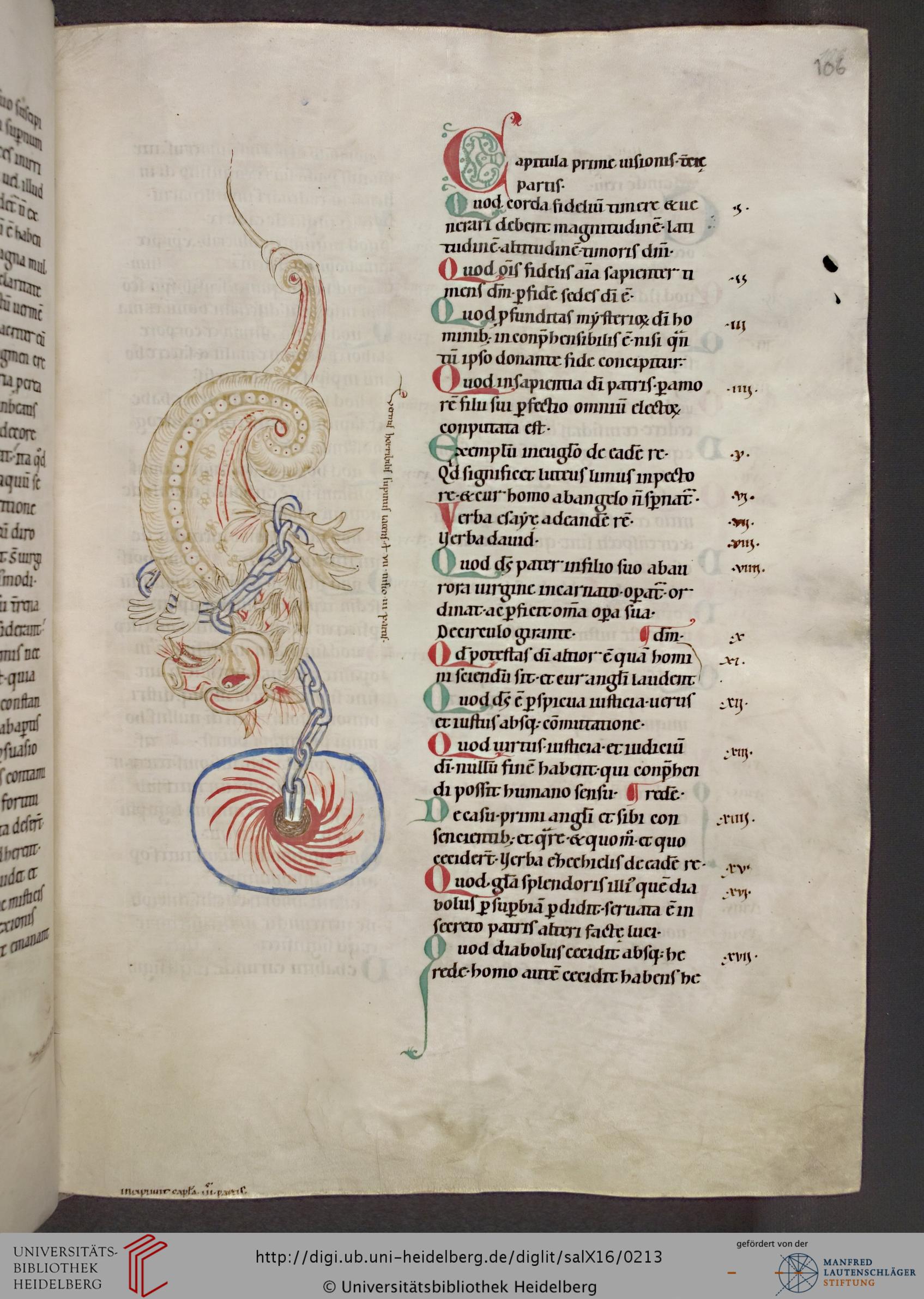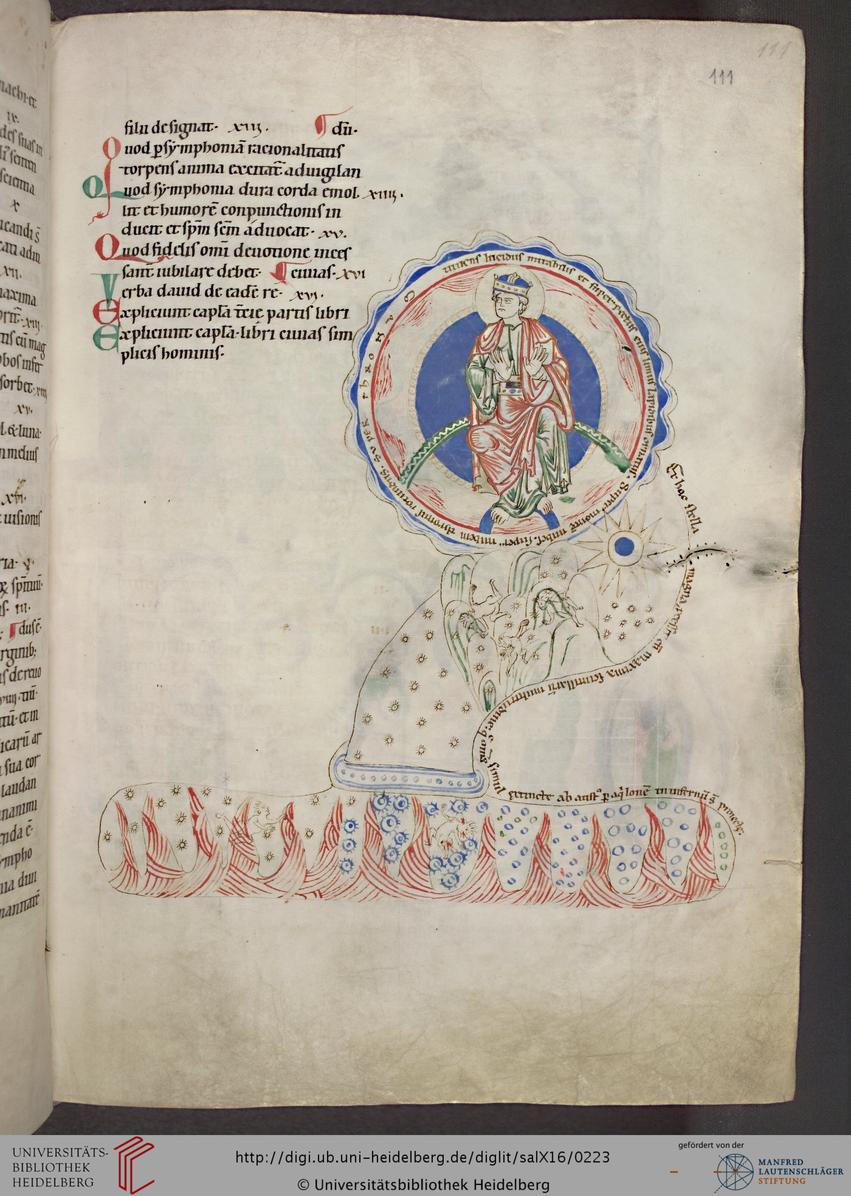

The original manuscript was 12.8 by 9.25 inches (32.512 by 23.495 cm), and in 235 parchment pages with double columns. Only black-and-white photographs of this manuscript survive. Some hoped that the German reunification in 1990 would cause it to reappear, but to date it has not. It resided in the Wiesbaden Hessische Landesbibliothek until World War II, when it was taken to Dresden for safekeeping, and lost. The most esteemed of these was the well-preserved Rupertsberg manuscript, prepared under her immediate supervision or that of her immediate tradition, being made around the time of her death. Scivias survives in ten medieval manuscripts, two of them lost in modern times. In each vision, she first described what she saw, and then recorded explanations she heard, which she believed to be the "voice of heaven."
#HILDEGARD BINGEN SCIVIAS PDF PLUS#
The final vision includes 14 songs, plus a portion of the music drama which was later published as the Ordo Virtutum. The third part, with thirteen visions, is about the coming kingdom of God, through sanctification, and increased tension between good and evil. The second part consists of seven visions and deals with salvation through Jesus Christ, the Church, and the sacraments. The first part includes a preface describing how she was commanded to write the work, and includes six visions dealing with themes of creation and the Fall. The first and second parts are approximately equal in length, while the third is as long as the other two together. The work is divided into three parts, reflecting the Trinity. The book is illustrated by 35 miniature illustrations, more than that are included in her two later books of visions. The title comes from the Latin phrase Sci vias Domini ('Know the Ways of the Lord'). It is the first of three works that she wrote describing her visions, the others being Liber vitae meritorum and De operatione Dei (also known as Liber divinorum operum). Scivias is an illustrated work by Hildegard von Bingen, completed in 1151 or 1152, describing 26 religious visions she experienced. In the present paper these elements of cosmos are described according to their function and artistic representation.Illumination accompanying the third vision of Part I of Scivias In some cases it is related to the real form of the person, thing or phenomenon. All elements that appear in visions, apart from their literary sense, also have a symbolic meaning. The last part of the book shows the characteristics of angels’ choruses. Synagogue as a „mother of incarnation” and the mother-in-law of the Church is described in the fifth vision.

The fourth one consists of three parts and concerns the human body and soul as well as a relationship between them. The third vision in turn shows the cosmic egg, which symbolizes the Universe. The second, very extensive, vision describes the fall of Lucifer and its consequence – the original sin of Adam and Eve. In the first vision one can read about the Creator. The first book of Scivias shows the creation of the world. The visions were written by Hildegard’s secretary, and at the same time illuminations were painted to illustrate the written text. The written text and illustrations The first book of Scivias of Hildegard of Bingen is composed of six visions which recount the author’s revelation. S um m ar y First Book of Scivias of Hildegard of Bingen. W sześciu wizjach z pierwszej księgi Scivias elementy, które zobaczyła Hildegarda, zostały ukazane zgodnie ze swoim symbolicznym znaczeniem – niekiedy bardzo odmiennym od wizerunku i opisu. Zasadnicza trudność zrozumienia relacji obydwu sposobów wyrazu wynika z tego, iż tekst opisuje symboliczny obraz widzenia. Wyjątkowy charakter pism mistyczki z Bingen polega przede wszystkim na tym, że tekst wizji jest równoległy do obrazu, który opisuje. Symboliczne przedstawienie elementów wizji Hildegardy wydaje się zaskakujące nawet z punktu widzenia tradycji średniowiecznej. Właśnie należy tłumaczyć, że obramowania tych ilustracji mają zdecydowanie mniej ornamentów. Symbolika w relacji ilustracji i tekstu w pierwszej księdze Scivias Hildegardy z Bingen


 0 kommentar(er)
0 kommentar(er)
